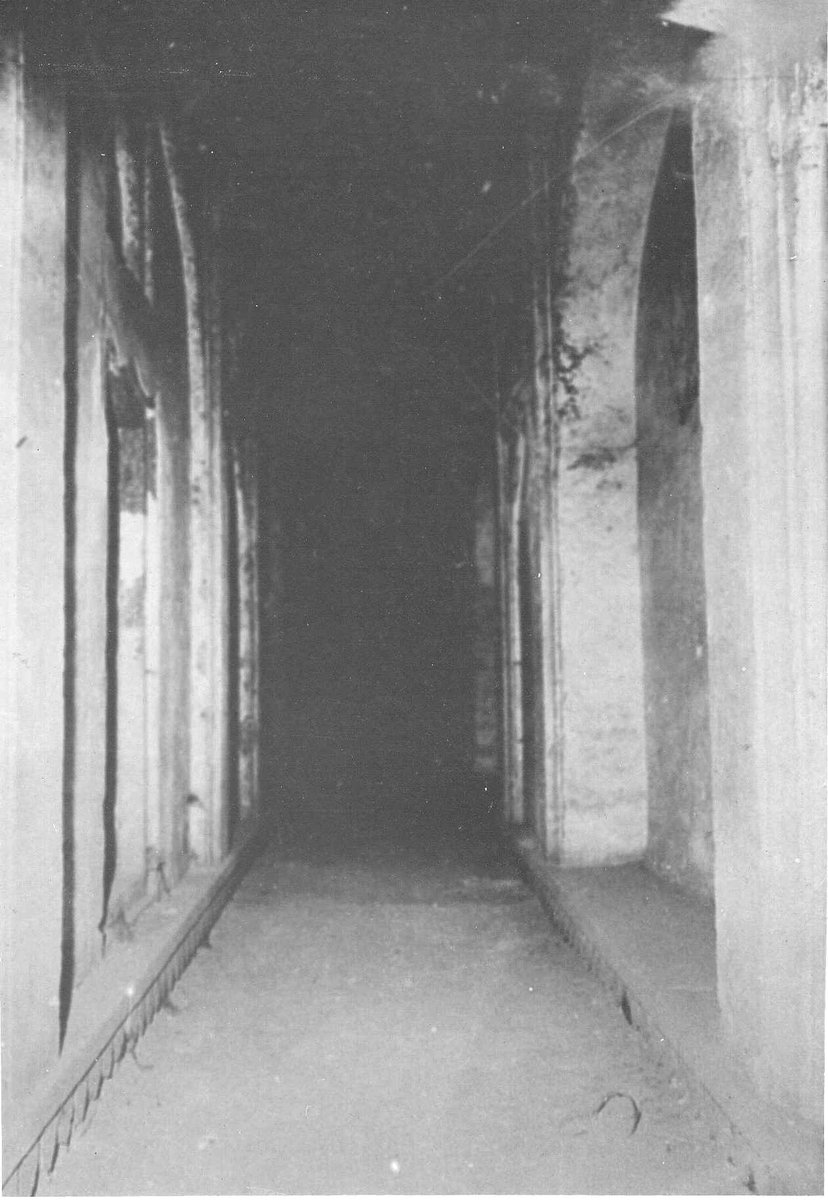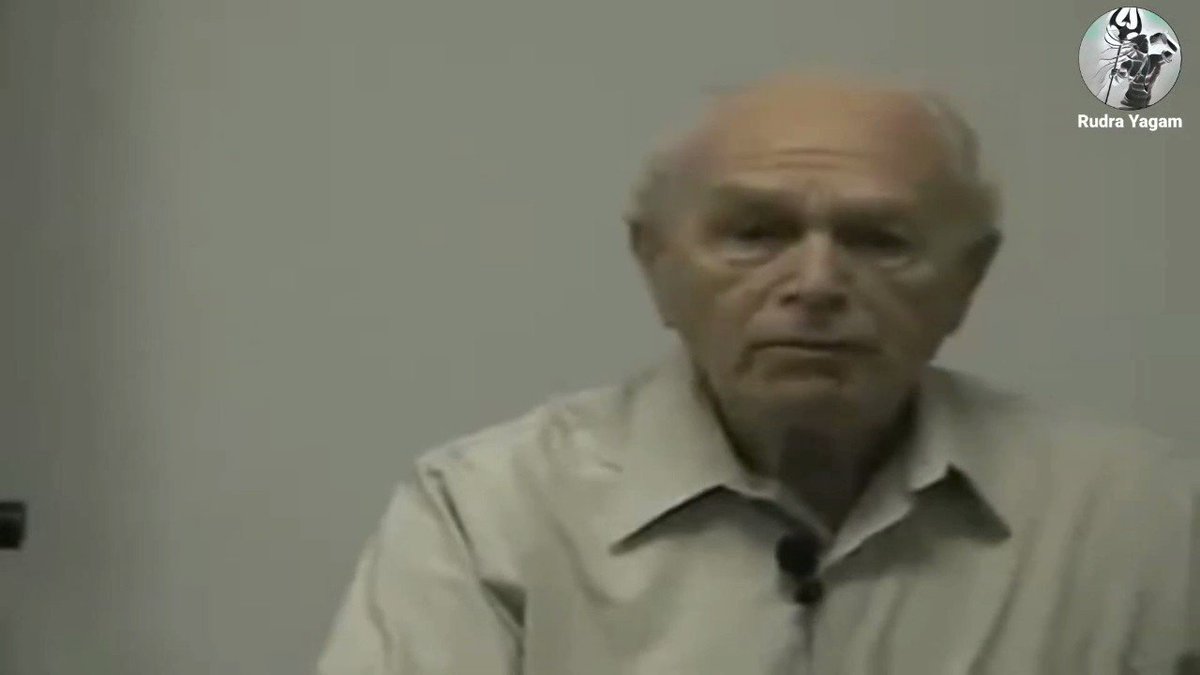The Centuries old Controversy !
The Taj Mahal is a Mausoleum or An Ancient Shiva Temple Called Tejo Mahalaya ?
Well Let's Begin With Architectural Evidences,
This Thread will be long & has Multiple Parts so you need Complete information then Do read Complete Thread 😉
[2/N]
Background : What Made Govt to Seal Doors of Taj Mahal
In 1974 American Prof Marvin Mills took sample from this door for Carbon dating & concluded that the Taj Mahal pre-dates Shahjahan
After this revelation the Govt of India removed the timber doors & openings were bricked up
What Does Indira Gandhi lead Congress Govt Wants to Hide from Public People By closing Doors of chambers by Brick ?
Why Did Govt Ban The Book " THE TAJ MAHAL IS TEJO-MAHALAYA" written By P.N.Oak ?
Let's Understand One By One ...
[4/N]
An aerial view of the Taj Mahal alias Tejo Mahalaya, ancient Hindu temple complex in Agra. For the last 300 years the world has been fooled to believe that this stupendous edifice was built by the Mogul emperor Shahjahan to commemorate one of his dead wives --Mumtaz.
[5/N]
Massive octagonal well with palatial apartments along its seven stories
[6/N]
A frontal view of the Taj Mahal alias Tejo Mahalaya in Agra. It is octagonal because the Hindus believe in 10 directions. The pinnacle pointing to the heaven and the foundation to the nether world, plus the eight surface directions make the 10 directions.
[7/N]
The dome of the Taj Mahal bearing a trident pinnacle made of a non-rusting eight-metal Hindu alloy.
[8/N]
A close up of the upper portion of the pinnacle of the Taj Mahal, photographed from the parapet beneath the dome. The Hindu horizontal crescent and the coconut top together look like a trident from the garden level
[9/N]
The full scale figure of the pinnacle on the dome has been inlaid on the red stone courtyard of the Taj Mahal. One may see it to the east at the foot of the riverside arch of the flanking building wrongly dubbed as Jamiat Khana (community hall) by Muslim usurpers.
[10/N]
The apex of the lofty entrance arch on all four sides of the Taj Mahal bears this red lotus and white trident--indicating that the building originated as a Hindu temple.
[11/N]
This is a riverside view of the Taj Mahal. The four storied marble structure above has under it these two stories reaching down to the river level. The 22 rooms shown in other photos are behind that line of arches seen in the middle.
[12/N]
Here you can see, not far from the plinth of the Taj, the stairway that goes down to the 22 rooms. It is surrounded by the red sandstone railing.
[13/N]
Typical Vedic style corridors & veranda is typical Rajput Architecture
[14/N]
This Naqqar Khana alias Music House in the Taj Mahal garden is an incongruity if the Taj Mahal were an Islamic tomb.Close by on the right is the building which Muslims claim to be a mosque.
[15/N]
Such are the rooms on the 1st floor of the marble structure of the Taj Mahal. The two staircases leading to this upper floor are kept locked and barred since Shahjahan's time.
[16/N]
Such are the magnificent marble-paved, shining, cool, white bright rooms of the Taj Mahal temple palace's marble ground floor.
[17/N]
This is the Dhatura flower essential for Hindu Shiva worship. The flower is depicted in the shape of the sacred, esoteric Hindu incantation 'OM.'
[18/N]
Staircase that leads to the lower levels
This staircase and another symmetrical one at the other end lead down to the storey beneath the marble platform.
[19/N]
On the inner flank of the 22 locked rooms (in the secret storey in red stone below the marble platform) is this corridor about 12 ft. broad and 300 ft. long.
[20/N]
One of the 22 rooms in the secret storey underneath the marble plinth of the Taj Mahal. Many such features of the Taj remain unknown to the public so long as they see it only as a tomb.
[21/N]
Interior of one of the 22 secret rooms. Note the strips of Hindu paint on the wall.
[22/N]
One of the 22 locked rooms in the secret storey beneath the marble platform of the Taj Mahal. Strips of ancient Hindu paint are seen on the wall flanking the doorway.
[23/N]
This esoteric Hindu design is painted on the ceiling of some of the 22 locked rooms in the secret storey below the marble platform of the Taj Mahal
[24/N]
The Vedic style design on the under-side of the dome over the central cenotaph chamber. Note the blazing sun surrounded by circle of Tridents, which are definite Vedic designs.
[25/N]
huge ventilator of one of the 22 rooms in a secret storey of the Taj, is seen here crudely sealed with unplastered bricks by Shahjahan.
[26/N]
Secret walled door that leads to other rooms
One of the 22 riverside rooms in a secret storey of the Taj Mahal, unknown to the public. Shahjahan, far from building the shining marble Taj, wantonly disfigured it.
[27/N]
Many such doorways of chambers in secret stories underneath the Taj Mahal have been sealed with brick and lime.
[28/N]
Palace in Barhanpur where Mumtaz died
[29/N[
Pavilion where Mumtaz is said to be buried
[30/N]
The interior of the so-called Mosque at one end from the Taj with evidence it was converted later into a mausoleum.
[31/N]
The Cenotaphs, or the supposed graves of Shahjahan (on the left) and Mumtaz.
The Cenotaph chamber with marble screen. The point is why have an octagonal screen around two graves? It is more likely to have been an area of where sacred activities once took place.
[32/N]
The interior of one of the rooms around the cenotaph chamber. These are areas where other forms of worship were held around the central shrine room, if the Taj was indeed a temple palace.
[33/N]
Stones for anchoring boats. On the North side of the Taj Mahal, there is a platform 3 ft 6 inches wide and it runs for the entire length.
[34/N]
After we climb down the steps we see a doorway to the passage on right of the hidden rooms.
[35/N]
Survey plan of Taj Mahal by Col Hodgson, 1825. Note the platform on the north side running from N/W to N/E tower and steps at two places from this platform to go to the river: a sure sign of planning for residential activity, not what you would need for a vacant mausoleum
[36/N]
The blue print plan of the Taj Mahal showing stairways that go down to the 22 basement rooms. This plan of the location of 22 basement rooms was discovered in 1902. I (V. S. Godbole) was able to visit them in December 1981 by prior permission
[37/N]
Blue print of the Taj Mahal showing cross-section of Central Edifice in a book by J Fergusson in 1855. It clearly shows the hidden basements
[38/N]
Prof Marvin Mills Statement Who Conducted Carbon Dating Test on Wooden Door samples of Taj Mahal in 1974 & Concluded as Taj Mahal Predates to Shahjahan for more then 300 Years
Watch Full Video on Bellow Link 👇
https://t.co/1diO11Cxu3 https://t.co/gs6NgqFl7C [39/N]
‘Taj Mahal is built on the land of Jaipur royal family’: Claims BJP MP Diya Kumari, says her family has documents to prove it
Watch Full Video on Bellow Link 👇
https://t.co/mh05nTsOQ5 [40/N]
Sharing Knowledge With Others Will Increase your Knowledge.. Do Re Tweet & Share this Thread in All Possible Ways😊
Follow
@TheRudra1008 &
@TheAdiRudra1008 and Subscribe Rudra Yagam channel for more contents like this
Channel Link 👇
https://t.co/3KDrjJGiBC Har Har Mahadev 🙏



































